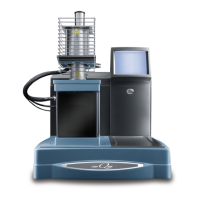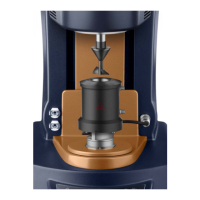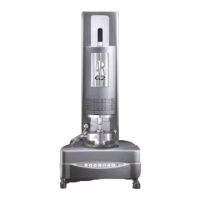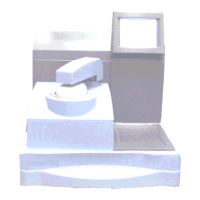Appendix B
B–26 TA I
NSTRUMENTS
TGA 2950
the surface water loss at 85
°
C and the bicarbon-
ate transition at 100
°
C are treated quite differ-
ently. This effect is most noticeable at low
sensitivity settings. The effect can be reduced or
eliminated by using multiple ramp segments in
the method, each tailored to the needs of specific
transitions. Increasing sensitivity setting may
also be helpful. (See the section entitled Ad-
justing Sensitivity Setting in Constant Reaction
Rate Mode).
Weight Gain
Experiments
It is important to note that, while most TGA
work involves decomposition analysis, some
applications involve weight gain such as in
oxidation studies. The Hi-Res
TM
heating control
techniques apply equally well to weight gains as
to weight losses. In this case, the absolute value
of the weight change signal is used for control.
Weight gains of up to 200% can be accommo-
dated. The rates of weight gain (%/minute) and
their relationship to heating rate, resolution
setting and sensitivity setting are exactly the
same as for weight loss. No special parameters
or controls are needed for Hi-Res
TM
weight gain
analysis. Combinations of weight gain and
weight loss in the same TGA scan are handled
automatically. It is important to recognize,
however, that when weight gain and weight loss
transitions overlap, the resultant weight change
is additive and may not be separable.

